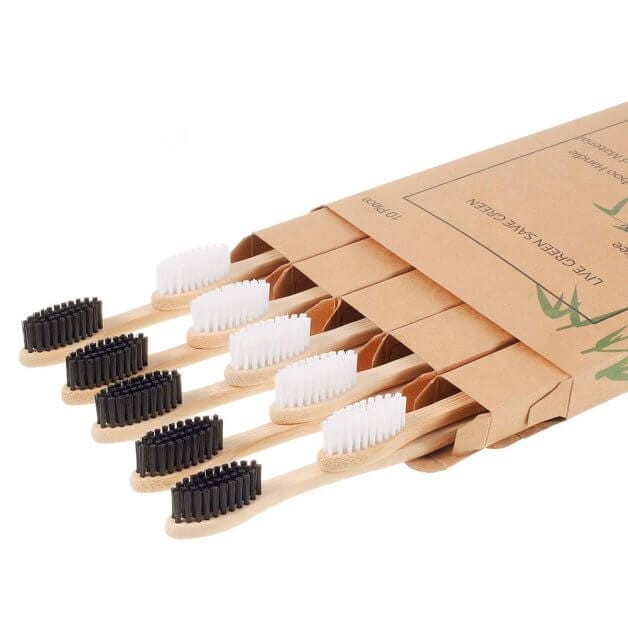Can you use an ultrasonic cleaner to clean or strip paint off miniatures or models? How does an ultrasonic cleaner work? Ultrasonic cleaners use sonic waves transmitted through a liquid (usually water) that rapidly “scrubs” dirt or other unwanted particles from object surfaces.
In this article, I explain how an ultrasonic cleaner works and why you should absolutely try one for your hobby work!

What are Ultrasonic Cleaners Good For?
Everything!
No, not really.
But, ultrasonic cleaners are useful for cleaning a lot of things that you may need to work with during a hobby session.

Ultrasonic cleaners use what are called “cavitation bubbles” emitted by the high-frequency pressure waves from the cleaner’s sound transducer(s).
The energy from the waves create microscopic forces that disrupt the integrity of contaminants, which adhere to materials like rubber, ceramic, plastic, metal, and glass.
For jewelry care, an ultrasonic cleaner is invaluable! For more about ultrasonic jewelry cleaning check here.
For the miniature hobbyist or fine scale modeler, this is especially useful because you can clean almost anything you need, including your airbrushes, tools, instruments, and even your model kits (e.g., prior to assembly).

How Does an Ultrasonic Cleaner Work?
Here are the 5 key elements on how an ultrasonic cleaner works. Combine these elements together and you have a powerful and effective cleaning machine.
- Fluid
- Sound
- Bubbles
- Force
- Heat

2. Sound
A sound transducer projects high-frequency sound (e.g., ultra-sound that is too high for us to hear) into the fluid bath. Powered electrically, an ultrasonic cleaner may have one or more sound transducers as the source of the ultrasonic energy.
3. Bubbles
Bubbles, lots of bubbles, is the key to how an ultrasonic cleaner does its job. Sound waves in the fluid create these bubbles forming what are called “cavitation bubbles” in the fluid bath. These bubbles essentially scrub the surface of your object, product, miniature or model, etc.
4. Force
Bubbles can be large or small depending on the ultrasonic cleaner, its sonic frequency, and the energy emitted into the cleaner. The size of the bubble determines the depth and aggressiveness of the cleaning process. Small bubbles can get into small tight places, but place less force on the surface. This is great for delicate parts, such as jewelry or airbrushes.
5. Heat
Heat produced by the vibrations of an ultrasonic cleaner also helps the cleaning process. Heat is especially useful for dissolving and removing oils, lubricants, and other hydrophobic chemicals. Some ultrasonic cleaners have built-in heaters, others merely use the sound energy to naturally warm up the fluid bath.
What Liquid to Use in an Ultrasonic Cleaner?
This is a very common question. Almost always use water, or any non-flammable liquid. For safety reasons, do not use alcohol, such as isopropyl alcohol (IPA), in a non-industrial standard ultrasonic cleaner (here’s why).

I know people use IPA in an ultrasonic cleaner, showing how to use IPA to clean or strip miniatures, or to wash resin 3D prints, but this is dangerous without taking proper precautions.

There are specialized ultrasonic cleaners that are explosion-proof. These vent vapors and protect users and property by containing the volatile liquid and vapors.
Use caution when deciding what to use in your ultrasonic cleaners.
Water is the best fluid medium to use in an ultrasonic cleaner.
Adding soap can also help clean your parts, models, or other things.
Finally, make sure to rinse out the bath to keep mold and other debris from accumulating in your ultrasonic cleaner bath.
Uses of an Ultrasonic Cleaner
An ultrasonic cleaner is amazingly versatile!
Common things you can clean with an ultrasonic cleaner:
- Airbrushes
- Fountain pens
- Jewelry (fashion items)
- Sculpting tools
- Models and miniatures (e.g., strip paint, prep parts before painting)
- And much more!
Sure, lots of industries use it, e.g., hospitals, factories, workshops, and laboratories. But, for the hobbyist, the ultrasonic cleaner is great because it can be used to clean a multitude of materials.

Because an ultrasonic cleaner uses sound waves, it is a safe way to remove contaminants from delicate parts of various materials, including metal, plastic, cured resin, glass, rubber, and ceramics.
Of the uses for ultrasonic cleaners, you may have noticed it being used for cleaning jewelry or fountain pens.
Ultrasonic cleaners are quiet during operation, despite using sound energy.
Sure you can hire a professional to clean your instruments or other things, but why? Simply use an ultrasonic cleaner in your home.
For stripping paint off miniatures, or cleaning 3D printed resin parts, an ultrasonic cleaner is a great tool.
But….
To wash resin off 3D printed parts, do remember that IPA should be used with caution in an ultrasonic cleaner. Both the fumes/vapor and liquid are flammable, and an ultrasonic cleaner heats up whatever fluid is in the tank.

If you do use IPA in an ultrasonic cleaner, then keep the area around the tank vented for the evaporating fumes (which are flammable), and never leave the system unsupervised.
Are Ultrasonic Cleaners Worth It?
This is a great question that I’ve touched upon in another post (see the section regarding stripping paint from miniatures).
You’ll find a lot of uses for an ultrasonic cleaner.
Yes, it’s worth it. Many of the tools a modeler or miniature painter use on a regular basis require upkeep. This means keeping your brushes, sculpting tools, airbrush parts, and other instruments clean.

Sure, you can carry them over to a kitchen sink and scrub them down. I did this for years. I even dedicated a few old toothbrushes for this task. Here are some cheap eco-friendly brushes I’ve found.
However, if you’re a miniature painter or a scale modeler, an ultrasonic cleaner can make things a lot easier for you. Of course, if you want a simple way to clean regular brushes, take a closer look at this simple brush cleaning guide.
Read on for why!
Key Benefits of Using an Ultrasonic Cleaner
There are 5 main benefits of using an ultrasonic cleaner:
- Easy to maintain
- Consumes little electricity
- Saves time
- Doesn’t require a lot of space (small footprint)
- Versatile cleaning ability

Do I Need Heat in My Ultrasonic Cleaner?
This is a question I’ve heard on various forums in the hobby community.
The answer is maybe.
Ultrasonic cleaners with built-in heaters are usually more expensive. Though, of course, some of the smaller heated cleaners are more affordable.
Most ultrasonic cleaners naturally heat the fluid in their baths. Projected sound energy travels through the fluid and heat is produced through friction between the vibrating particles.

Some ultrasonic cleaners will have built-in heaters. These immediately raise the temperature of the fluid bath.
Heat does two things:
- Any dissolved gas in the fluid (usually water) is forced out. This is also known as heat-induced de-gassing. When you get close to boiling point (100C for water at sea level), nearly all of the dissolved gas in the fluid will have been removed.
- At this point, soaps and detergents may work better. Heat also improves the ability of the water-soap to dissolve particulate matter, dirt, and other contaminants.
What is the Best Way to Place Parts in an Ultrasonic Cleaner?
The recommended way to place parts in an ultrasonic cleaner is in a basket or holder to keep parts off the floor.
Placing parts on the bottom of an ultrasonic tank is similar to putting your hand on a speaker diaphragm and trying to listen to music. This muffles and distorts the sound.

The same with parts sitting on the floor of an ultrasonic cleaner. A part, e.g., model, miniature, or other object, on the cleaner’s floor will prevent the sound transducers from creating the proper vibrations through the bath.
The best way to arrange your parts inside an ultrasonic cleaner is to place them in a basket that has a low surface area that touches the walls or floor of the bath tank.
More expensive, high-end ultrasonic cleaners will use metal baskets like this one.
Note that some plastic baskets can absorb wave energy, reducing the effectiveness of your ultrasonic cleaner.
How Many Parts Can Be Cleaned in an Ultrasonic Cleaner Tank?
Here’s the general guideline for how large or how many parts you can clean at the same time in an ultrasonic cleaner.
The total surface area of the object(s) (measured in square inches or centimeters), should not be greater than the tank volume (measured in cubic inches or centimeters).

The recommended size of the tank to part ratio is such that there is more than 1.5 inches (or about 3.75cm) between the sides of the tank, and at least 2 inches of liquid below the part (which should be in a basket).
This arrangement will provide the most thorough and effective cleaning results with an ultrasonic cleaner.

Final Word
Are you looking for a faster, easier way to clean your models, miniatures, airbrushes, or other hobby instruments? Are you a jeweler, scale-modeler, or sculptor? If so, an ultrasonic cleaner might be just the tool for you. They are inexpensive, durable, and easy-to-use.
Because of their relatively small-size, they can sit on your desktop or fit right next to your work station. They produce almost no noise, operating quietly, and several models have adjustable timers and power-output settings.
Give one a try!



Tangible Day on YouTube (Miniatures and More!)

I’m glad you mentioned isopropanol (IPA) and what people commonly use it for. I have a resin print wash unit that is designed for IPA, and it IS NOT ultrasonic, it just has a magnetic stirrer. The problem is that ordinary rubbing alcohol is only 70% IPA, which isn’t ideal for washing models, so some people (apparently) have gotten the clever idea that putting it in an ultrasonic cleaner will make it work better. I use 99% IPA, which you can’t get from your local drugstore (I order it in 5-gallon drums from ULine), to clean models, and it requires nothing more than soaking to remove liquid resin. I haven’t tried removing paint with it yet, but I suspect most model paints would require little more than soaking.
On the other hand, I HAVE used industrial ultrasonic cleaners that are designed to use specialty cleaning chemicals, usually chlorine-based, which can dissolve silicone. Nothing inflammable, though.
Yeah you need high concentration IPA to wash models and resin properly. Industrial ultrasonic cleaners are really nice, but also super expensive for most needs.
Great introduction to using an Ultrasonic Bath.
I used one for many years whilst in the RAF, and it’s amazing what you can use them for.
A few additions: de-gas the bath prior to first use. This is just a case of running it for a short time, depending upon volume, to remove air from the solution. This makes the process more efficient.
Secondly, certain materials can be damaged by the process, namely certain types of rubber, which will start to fall apart once dry – we never put rubber seals in the bath for this reason. Also, certain plated materials, as it can cause the plating to be removed, though this will usually take some time – we were using an industrial bath, so this may not be the case with a small hobby one.
One question – I’ve heard the process can weaken certain glues, such as superglue, and on my bath it states never to put jewelry in that contains glued stones. Have you ever experienced problems with glues breaking down?
Yeah I was referring to non industrial ultrasonic cleaners. Industrial cleaners are in the hundreds to thousands of dollars price wise (not for hobby work really). My ultrasonic cleaner experience has not revealed a breakdown of glue per say but then again I haven’t really taken a close look. That would be a nice use. But in general I wouldn’t be surprised if an industrial ultrasonic cleaner could break things (even itself) if not used properly.
Pingback: A Closer Look into Professional Equipment During Fire Damage Repair
How long do you leave parts in the bath for various cleaning jobs? I want to use mine to clean new metal minis of mold release or other contaminants prior to priming and painting but don’t know how long is enough. Thank you for the great articles!
10 mins for general pre paint prep cleaning before primer and paint. I do this for metal and plastic models. I use a tiny drop of regular hand soup in the bath water. A quick rinse under the tap after the sonic cleaner; let dry, and it’s ready for priming!